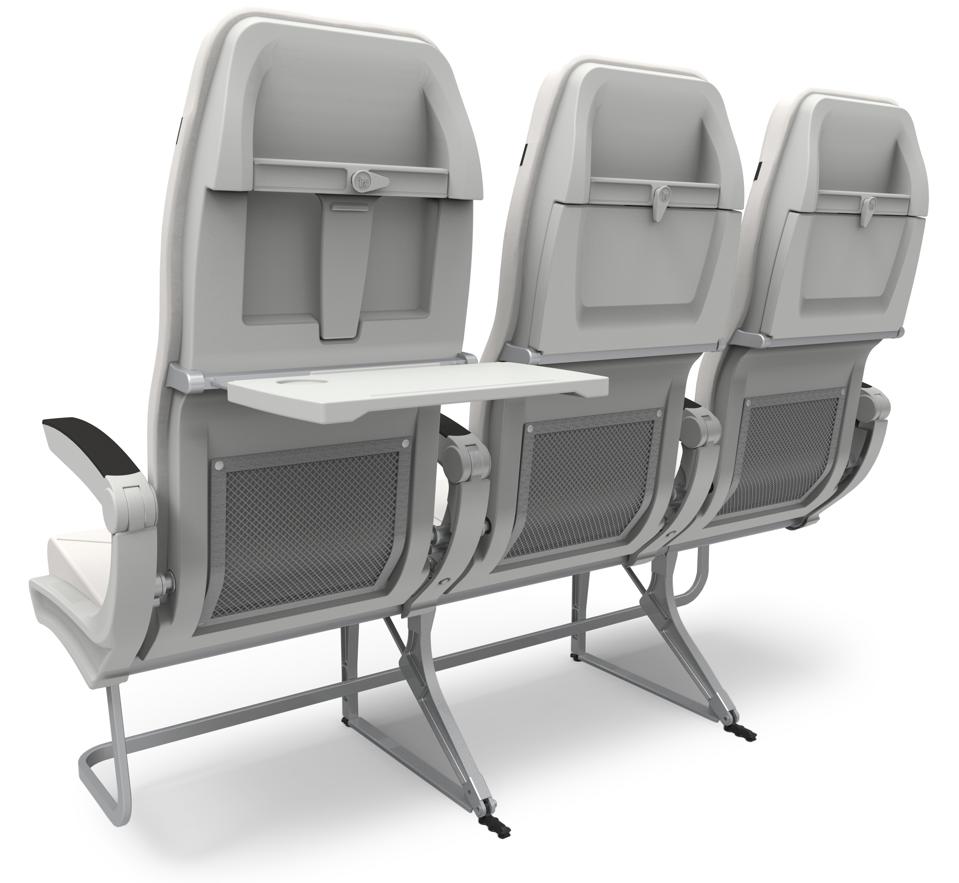RFT 407: Future Airline Seating
Image credit: Forbes
From Forbes:
Will the future of travel be new airline seats spaced out with hygienic barriers, or saddle-style standing seats to cram more passengers on a flight?
Cleaning and social distancing have turned from health necessity to lifestyle trends, and companies are seizing the moment – but not the logic. The latest is conceptual passenger seats for airlines in a post-COVID world. The proposals are different from any economy class offering today.

The Janus (above) wants to introduce quasi-isolation by proposing every middle seat face backwards with shields installed between seats. The Glassafe seat (below) proposes installing a transparent plastic hood around each economy seat to limit germ flow.

Don’t expect either seat to be on a plane. They appeal to current impulses but not long-term needs.
These attention-getting concepts are the norm for their designer, Aviointeriors. It’s the same company that proposed the below “SkyRider” saddle-style standing seats, which garnered global attention but not a single sale. There are doubts if regulators will even permit them on an aircraft.
As a smaller vendor, publicity raises awareness for Aviointeriors’ more ordinary seats: slim padding, little legroom, and no head rest or TV screen.

Airlines like Air Niugini and defunct Transaero use seats from Aviointeriors while Alaska Airlines, Lufthansa, Qatar Airways and others select seats from Recaro, which also makes car seats and baby strollers.
The aviation industry jokes that the German manufacturer is so in demand that airlines don’t choose Recaro – Recaro chooses them. Safran is another common supplier.
They skip whimsical concepts for practical developments: lighter but stronger metal alloys, new cushion materials, and better lighting.
Less radical concepts have failed to catch on. Air New Zealand’s “Skycouch” only found one other buyer, China Airlines, which later discontinued it. Delta Air Lines DAL was going to install the “Cozy Suite” on dozens of 767s and 777s, but cancelled the idea. It put the prototype seats up for sale last year.
Even if these new concepts were to be on an aircraft, it surely wouldn’t be before 2022. Aircraft seats have to undergo rigours strength and flammability testing to ensure they can protect passengers in a crash and withstand fire. That testing could raise problems with the seat concepts.
New aircraft seats have to withstand a 16g dynamic force. A roller coaster has forces about 4g and a Formula One car 6g. The plastic barriers have to be strong enough to remain intact, but not so hard they could cause injury if a passenger’s head suddenly crashes into it.
The barriers also add what airlines and seat manufactures always want to reduce: weight. Even a lightweight barrier adds costs when multiplied across hundreds of seats on hundreds of planes.
The barriers could impede an emergency evacuation. Regulators require passengers be able to get out of an aircraft in under 90 seconds in darkness.
There are practical problems. Will oxygen masks be harder to reach in an emergency?
Germs can move over and under barriers. Face masks are arguably more effective.
Aircraft already have better circulation than is commonly thought. Airflow on an aircraft is vertical, reducing the number of people it comes into contact with, unlike a typical air conditioner that blows air horizontally across many people, picking up and moving their germs along the way.
Airlines have a poor track record cleaning the small tray table. Will they sufficiently and regularly clean all of the new surface area the barrier introduces?
The reversed middle seat is supposed to create privacy, but passengers will face each other and there will surely be awkward eye contact, a complaint of British Airways’ former “ying-yang” business class layout.
